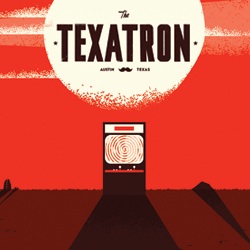RAGDOLL METAPHYSICS: ARMA II, AN ODE TO THE SURREALISM OF SIMULATION
There are times when the obscure corners of gaming seem to fade away and leave us with nothing but mainstream titles to chomp our way through. But not this month, and certainly not with the arrival of the awkwardly shambling simulatory behemoth that is Arma II. This is a soldier sim that pretty much defines how far the combat simulation end of gaming now is from the shooter roots of Doom.
Layers of controls, and clunky contextual UI, vast AI systems fighting across hundreds of miles of terrain: it’s about as close as we’ve come to modeling real war. And as a consequence it should come with a sticker on the box that says “this probably isn’t for you”. Arma II is as independently crafted as anything else out there, but your typical indie game it is not.
Bohemia Interactive Software, the Czech developer behind Operation Flashpoint, Arma, and the recently released Arma II, are one of the most singular and driven development studios you could name. Their energy and enthusiasm for creating an all-encompassing soldier sim – a game type that is barely imagined by other studios – seems to defy sense.
Why would you even begin a project of this scale, unless you were richer than Bill Gates? Understand this, and you’ll understand that their project is valuable simply by its uniqueness. In fact, I’d go further than that, and say that they are arguably one of the most important developers in the world today. Not because of accomplishment, because that always seems to fall short in their games. Rather, what is significant is their ambition.
BIS are one of the few developers for whom realism is a kind of philosophy, and not simply a goal. Their games are as much about simulating battlefield environments as they are about creating a realistic game. The conception of a game, it seems, comes second to their intention to create battlefields that do what real battlefields do.
This means that their games model all kinds of seemingly unnecessary things, such as the effect of wind on long range ordnance, or the ability to jump out of a moving helicopter and parachute to the ground at low-altitude, or to command a platoon of armoured cars. Arma II is like a catalogue of half-finished features from two dozen other games: a kind of bargain warehouse full of game mechanics intended for use elsewhere, their physics all slightly uneven.
It’s a game that enables the most outlandish peripheral use, thanks to the extraordinary support the team have built into their infantry simulation:
It’s a game with tanks, jeeps, helicopters, snipers, cars, mountain bikes, fighter planes, east European tractors, castles, cows, grenades, anti-aircraft batteries, laser-pointers, pistols, rabbits, artillery, drones, old ladies, living AI, and a fiction ex-Soviet state mapped meticulously from a huge slice of real world Czech Republic. And what all this adds up to is something strange, and not “real” at all.
I’ve grumbled about realism in games plenty of times: I’d rather games were weirder, and more abstract. When games attempt to push realism too hard, they often become sterile. This was something that people complain about with regards to photorealism and the march towards verisimilitude in games like Crysis. What they have in technology, they seem to lose in style. In some ways this is true of Arma II, and the previous games. And yet the complexity of the game, the over-ambition and barely-holding-together shakiness add up to something quite different. It becomes, thanks to its un-canniness and near-miss proximity to the real, a kind of surrealism.
It delivers insane bugs:
And it disgorges spectacle like no other game has ever managed:
Indeed, this sort of game provides the kind of emergent surrealism that is impossible in less complex, better-polished titles. Some people might not think that’s a good thing, and maybe it’s not, but it still makes me laugh.
That last clip is one of many constructed in the game’s editor. That, I think, demonstrated in a rather extreme and silly way, is what BIS are really all about. While we’re generally happy to judge them on the retail game, the single player game, and perhaps a bit of co-op play with chums, the true of achievement of the game is not so much in creating an exciting experience for the average consumer, but in facilitating people who want to take things much, much further.
Arma II, like some other games that come bundled with an editor or user-generated content system, becomes as much about player creativity as it is about the developer’s own. It’s a toolkit for allowing very serious simulation junkies to create intricately realistic scenarios, drill for them, and then execute them in near-professional sessions of internet soldiery. And they do that, week after week, month after month, with dizzying precision.
But it’s also a toolkit for arranging tractor races, setting up 1000-man AI battles, and making tanks very unhappy with the existence of chickens.
One day Arma II will be finished, and the bugs will be smoothed out. And in some ways, I think I’ll miss the brokenness.
[Jim Rossignol is an editor at RockPaperShotgun.com and the author of This Gaming Life, an account of the life of modern videogames and some of the people who play them. Ragdoll Metaphysics is his Offworld column exploring and analyzing gaming’s vast world of esoterica.]
See more posts about: Offworld Originals, Ragdoll Metaphysics






